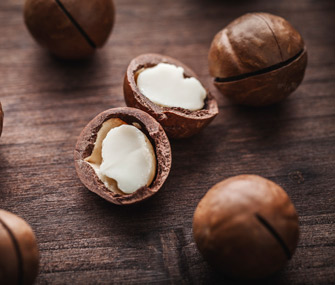Protect Your Pet From Common Household Poisons
Published on December 16, 2013
Skip To

You might think that accidental poisoning is an outdoor hazard, related to risks such as spilled antifreeze. But in fact, Veterinary Pet Insurance (VPI) claims data reveals that substances found indoors filled the top slots on our list of our poison-related claims. Our pets’ willingness to eat things better off left untouched sent more than 20,000 of our half-million insured pets to the veterinarian over a six-year period, racking up more than $8.2 million in costs for accidental indoor poisonings.
While prompt veterinary attention can be the difference between life and death in such circumstances, as the chief veterinary officer of VPI, the nation’s first and largest pet health insurance company, I can assure you that my colleagues and I would rather not see your pet under such life-or-death conditions. Taking some simple precautions around the house can reduce your pet’s chances of becoming a poisoning statistic.
The Killers Inside Your Home
VPI claims data for poisoning tracks closely with that of other sources, including the Pet Poison Helpline. For example, accidental ingestion of medication (human or animal, prescription or over-the-counter) ranks high on our list of common poisonings. Pets can be very talented at getting into medication — in many cases, even child-proof lids don’t slow pets down at all. Storing all medications in drawers or cupboards can dramatically reduce the risk of accidental ingestion and poisoning. (And it’s not just dogs or cats who will pop open your pills: We’ve actually had a claim for a pot-bellied pig that got into an owner’s medication.)Other indoor poisoning hazards from our claims data, ranked by treatment cost, include the following:
Rodenticides: No surprise that products meant to kill rats and mice will kill dogs and cats too. Consider alternatives such as traps (snap traps or zap traps) that kill rodents instantly without risk to pets, or use catch-and-release traps if you don’t mind rodents living — just somewhere else.

Methylxanthine: Most of us are more familiar with the common names of the toxins in this category: chocolate and coffee. Poisoning risks rise with the levels ingested in relation to the size of the dog (smaller dogs are at bigger risk), but these foods are both solidly on the “do not share” list for pets.
Houseplants: If you’re bringing plants into your home to brighten up your winter days, make sure lilies aren’t on your list. While most household toxins appeal more to dogs than to cats, lilies in particular and houseplants in general — even common ones such as daffodils and sago palms — are the exception, with cats getting into more than their share of trouble. Check Vetstreet’s list of unsafe houseplants and make sure all your indoor greenery falls into the “OK for pets” category.
Household chemicals: It’s important to remember that pets (especially young ones) will eat things that we can’t imagine have any appeal. Keep your cleaning supplies and other household products safely stored; childproof latches for cabinet doors are a good investment in homes with pets.
Insecticides: As with rodenticides, these are chemicals meant to kill, and they don’t always hit their intended targets; to keep pets safe, read and follow directions carefully. This is especially true of flea and tick products: Don’t use dog products on cats, and if the label says not to use on young animals, don’t. When in doubt, ask your veterinarian for recommendations on safe, effective flea-and-tick products. And of course, be sure to store unused product safely.
Heavy metal toxicity (lead, zinc): You may not know that pennies are made of copper-coated zinc, and you probably are also not aware that among all the claims for all the crazy things pets will eat, a belly full of pennies wouldn’t be surprising. Keep loose change out of reach of curious pets.
Alcohol poisoning: Giving your dog a beer isn’t funny, even if he seems to like it. Because pets are smaller than we are, even small amounts of alcohol can be dangerous for them. A related case from our claims files: A dog who got sick after eating bread dough, because the material fermented in the warm, dark environment of the dog’s stomach.

Know the Signs of Potential Poisoning
Sometimes you know your pet needs to see a veterinarian right away because you find the evidence — an empty medicine bottle, for example. If that’s the case, bring the evidence with you, so your veterinarian will know what your pet ate, how much and how to counteract the toxic substance. You may not find the empty package, though, so it’s important to be aware of poisoning symptoms, such as staggering, vomiting, drooling, seizures and even loss of consciousness. Get your pet to the veterinarian, right away!Preventing poisoning should be your goal, but knowing how to react is also critical. Make sure your first aid kit is equipped to deal with accidental poisoning, and ask your veterinarian where she recommends you go for emergency veterinary care when your regular clinic is closed. Most cities have dedicated emergency veterinary hospitals, but in more rural areas veterinarians may share after-hours duties or respond to after-hours calls themselves. Don’t waste precious time figuring out what to do when every second counts: Know what to do, who to call and where to go when your pet needs medical attention immediately.





